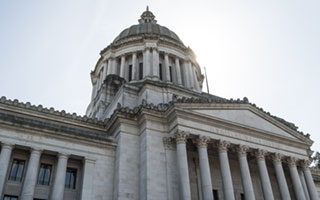Earlier in the session, the House and Senate Transportation Committee chairs unveiled a 16-year, $16 billion transportation package to fund new highway and multi-modal transportation projects. The plan would increase funding for maintenance, ferries, numerous projects along the I-5 corridor, and upgrading transit systems.
Under the plan, the $16 billion package would be funded with revenues from the newly enacted Carbon Cap and Trade program, use of federal infrastructure funds, a one-time transfer from the state’s general fund, and increased fees on vehicle, truck, and motorcycle licensing. The plan also anticipated raising more than $2 billion by imposing a new $0.06/gallon fee on fuel exports.
The Governors of Alaska, Idaho, and Oregon immediately voiced opposition, arguing that the plan effectively adds a $0.06 gas tax increase on their residents to fund transportation projects in Washington State. State lawmakers from those states began introducing retaliatory legislation in their respective legislatures. For example, in Alaska, the Legislature began considering additional fish landing fees for Washington registered vessels operating in Alaskan waters.
Additionally, Oregon Governor Kate Brown penned an op-ed in the Seattle Times urging Governor Inslee and lawmakers to reject the proposal, pointing out the importance of cross-border cooperation on projects like the new Columbia River crossing.
On Saturday, Rep. Jake Fey, Chair of the House Transportation Committee, indicated that he would remove the new fuel export fee from the House package. He proposes to replace most of the funding from the fee by diverting some revenues dedicated to the Public Works Assistance Account. That account, which is primarily funded by the Real Estate Excise Tax, supports local government infrastructure projects via the Public Works Board.
These proposals now enter final negotiations between the House, Senate, and the Governor. Suffice it to say that all of us now have a better understanding of where fuel refined in Washington State ends up.





